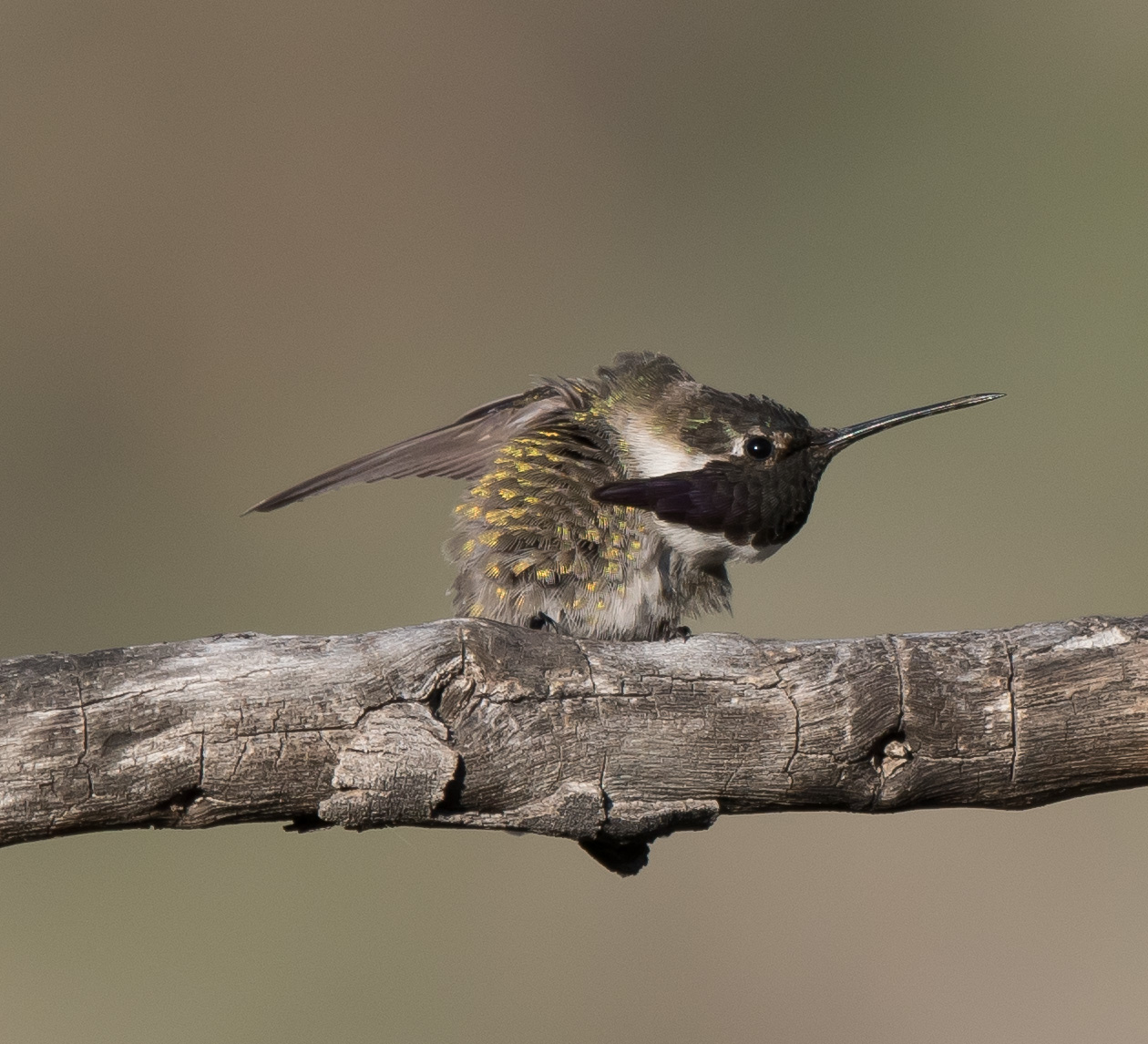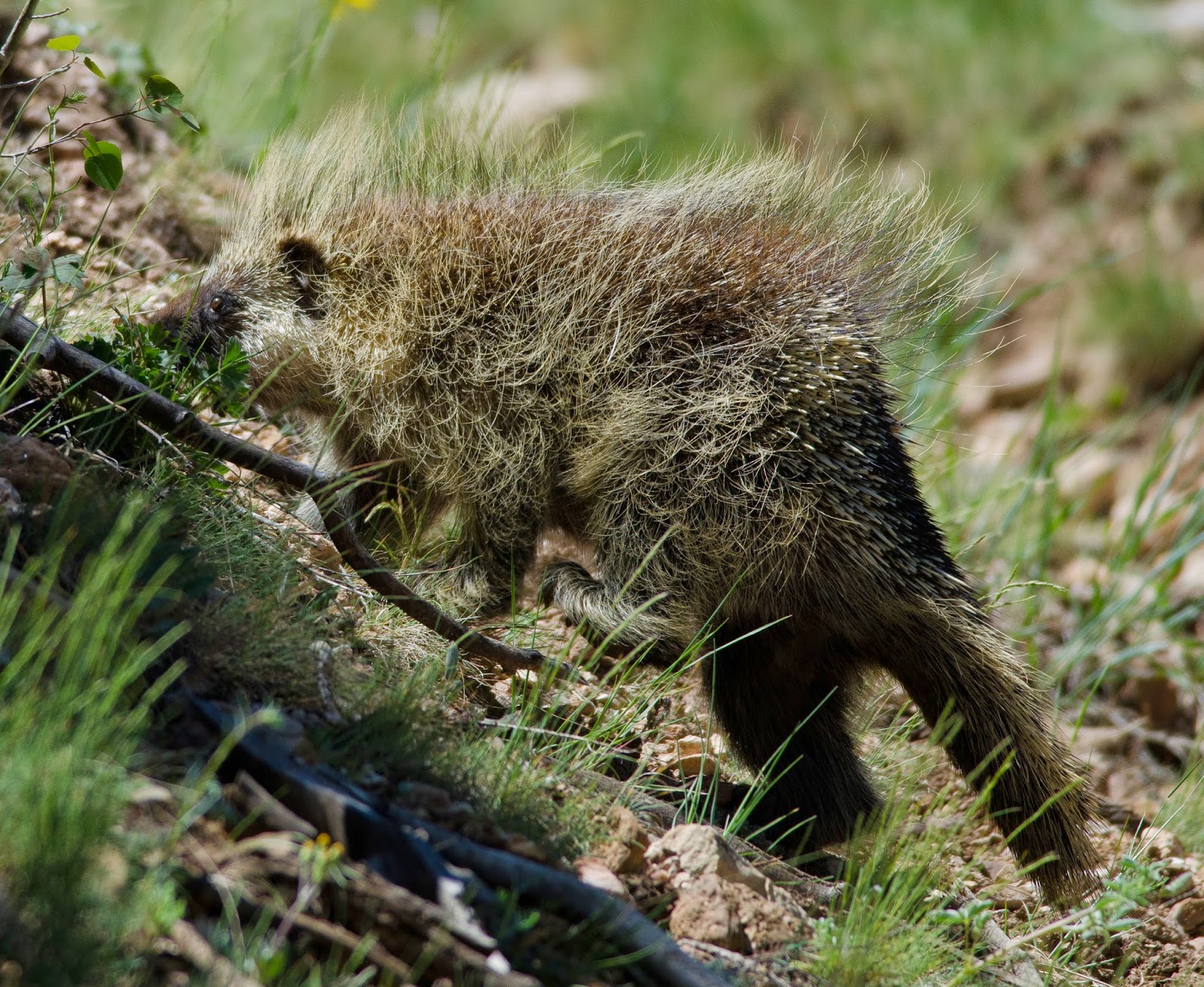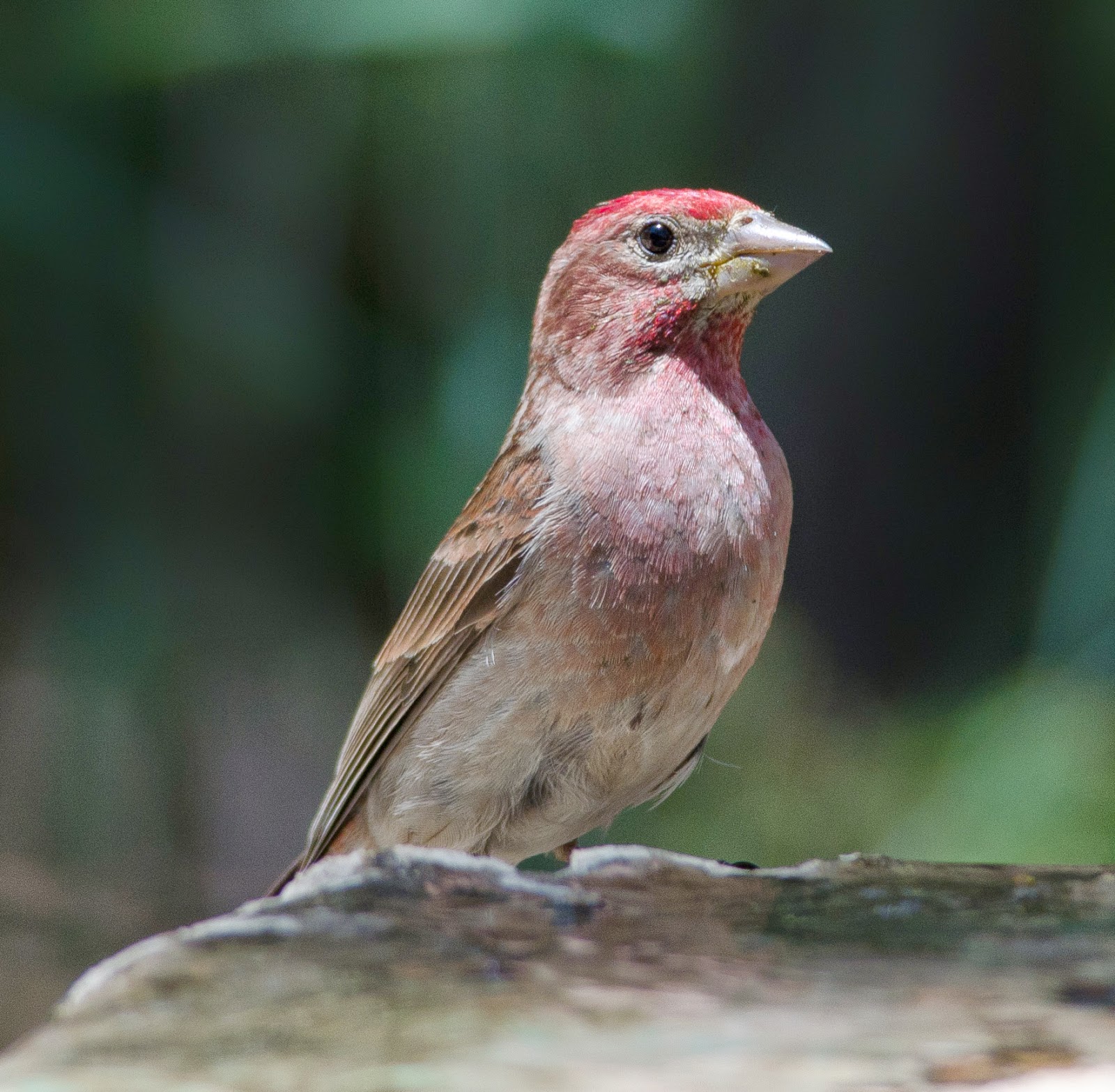Saturday night the winds had calmed down, but that also brought lower temperatures (down into the 30's) that night. But with the proper equipment, camping in the cold is not all that bad and sleep was fairly easy on this second night. This was going to be our last day of the expedition, but with a long 6 hour return drive looming on the horizon, many of us decided to make it a short day. The entire group stopped near the entrance of our turn off to our camp site to check for a few birds in the area where we had seen the Downy Woodpeckers the night before. This morning they were there to greet us again along with some Williamson's Sapsuckers and some Evening Grosbeaks, which was a new bird for me. Although my photos left a lot to be desired, at least I got to see and hear them for the first time. (Guess that means I will have to back again for better photos!)
Williamson's Sapsucker - Male
Black-throated Gray Warbler
Porcupine
Williamson's Sapsucker - Male
Williamson's Sapsucker - Male
Evening Grosbeak
The entire group decided to head into the Grand Canyon National Park on this morning and visiting the North Rim is much different than the South Rim. Due to the remoteness of the North Rim, it only gets about one tenth the number of visitors on a yearly basis, but the road is also closed to the North Rim in the winter months due to snow. The views from the the North Rim were just as awesome.
At the lodge at the North Rim, we found some cool birds as well, including a pair of Western Bluebirds that were feeding young. We also had a Virginia's Warbler, Black-throated Gray Warblers, and 'Audubon's' Yellow-rumper Warblers.
Western Bluebird - Male
Virginia's Warbler
'Audubon's' Yellow-rumped Warbler
We also found Steller's Jays which are gorgeous birds, but we got to see a different side of them as one had stolen a newly hatched junco chick from a nest and was feeding on it. Probably not a photo that many want to see, but it also shows nature in the raw.
Steller's Jay
Had some great mammals as well along the road. There is a herd of bison found inside the park. The park calls them bison, but truth be told they should probably be called 'beefalo' as they are remnants of a ranching operation from years back of a rancher that was crossing bison with cattle as an experimental ranching idea. They animals do look quite a bit like bison, but not sure how purebred bison they really are.
Probably the most interesting mammal that we discovered was a Porcupine along side of the road as we were leaving. Got to see 2 of these animals when we were in New Mexico in February of this year, but both were sleeping in trees; this one was actively grazing along side of the highway.
Porcupine
What a way to end an exhilarating field expedition! And I have to add a group photo of the 9 campers that journeyed to the North Rim. Want to thank a great group of people that made this an exciting and enjoyable experience; Eric Hough, Magill Weber, Chris Rohrer, Lauren Harter, Nathan Williams, Brian Ison, Michael Lester, and Jarrod Swackhamer.




























































